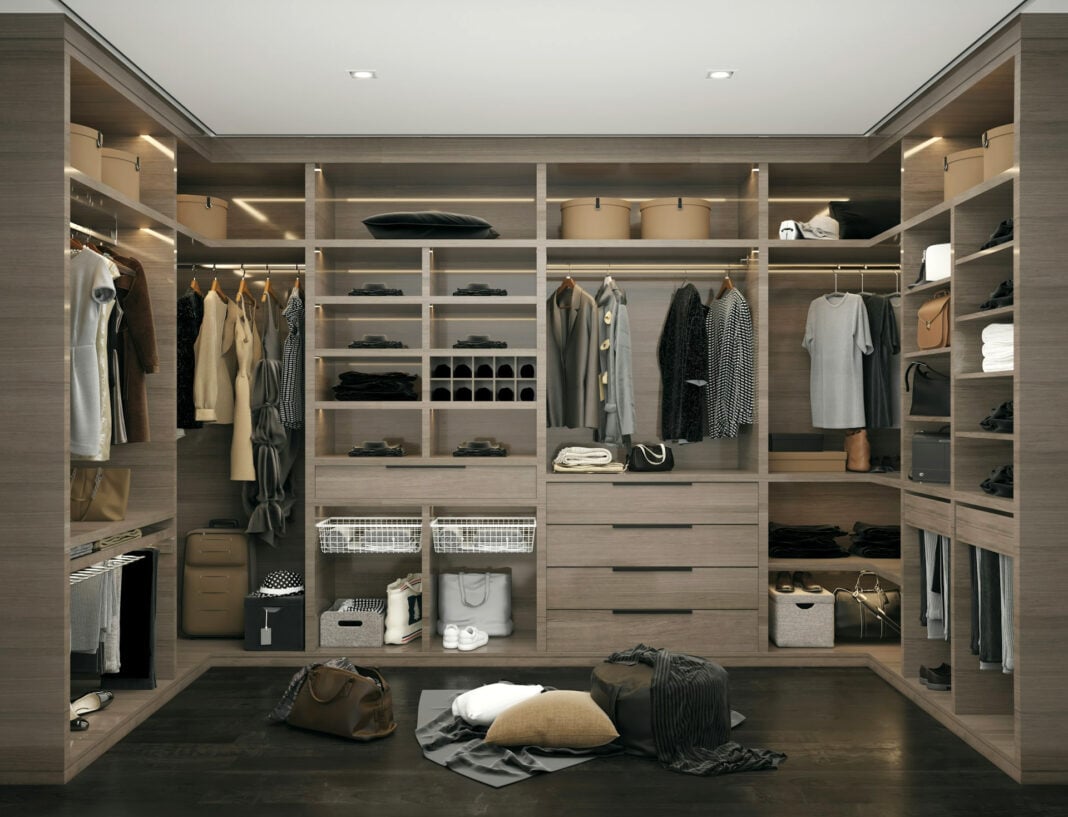To craft an inviting and organized space, efficient closet design is crucial. Every inch counts, whether you’re renovating or starting from scratch. With thoughtful strategies and a good design approach, you can maximize your closet space, ensuring it meets your needs and complements your lifestyle. These tips will help you transform your storage chaos into a refreshed, stylish haven.
Understanding Your Space
Taking time to evaluate your space is the first step. Measure your closet meticulously, noting the height, width, and depth of every nook and cranny. This inspection helps identify potential areas often overlooked, like the vertical space above hanging clothes. Take into account your needs; whether you have a growing shoe collection or need a designated place for seasonal clothing, recognizing these factors will guide your design.
Think about what you currently store and what you want to keep accessible. A closet that functions well should blend storage for everyday items like shoes and accessories with seasonal selections. Making a list can provide clarity on what needs space and how to allocate it effectively.
Choosing The Right Closet Style
Your closet style can significantly impact its functionality. Reach-in and walk-in closets each offer unique advantages. Comparing reach-in vs. walk-in closets, space configurations will determine their effectiveness in your home. Reach-in closets optimize smaller areas, providing ample storage through thoughtful organization. Often, they require sliding doors to save floor space and accommodate hanging clothes and shelves.
On the flip side, walk-in closets present more room for creativity. They provide opportunities for adding seating or extra decorative elements. If space allows, walk-in options can become a luxurious retreat, where personal styles shine through tailored designs like island storage areas or full-length mirrors, enhancing aesthetics.
Think about how your daily routine aligns with each closet style before making a decision. Lighting is another important factor; LED strips or spotlights can make finding items easier while adding a modern touch. Incorporating adjustable shelving can help your closet adapt to changing storage needs. For a more organized look, use matching hangers and labeled storage bins. The right closet style should balance practicality with visual appeal, ensuring it complements both your home’s design and your lifestyle.
Smart Storage Solutions
Introducing innovative storage solutions will keep your closet organized. Use shelving to elevate items off the floor, creating a more open and spacious appearance. Adjustable shelves allow for flexibility, accommodating everything from shoes to bags. For smaller closets, add baskets and bins that slide easily onto shelves, keeping your belongings neatly tucked away while remaining accessible.
Another significant improvement is integrating drawer systems into your design. Drawers can help separate clothing into categories, ensuring you can find what you need without rummaging. Use dividers within drawers to maintain order among smaller items, like accessories and undergarments. Choosing the right drawer depth can maximize space usage, catering to your specific storage needs.
Incorporating hooks on the inside of doors can add extra hanging space for scarves or belts. Stackable storage containers offer a practical way to use vertical space efficiently. Clear containers make it easy to identify contents without opening each one. Installing pull-out racks can simplify access to shoes or folded clothes. Thoughtful placement of lighting within the closet helps illuminate all corners, reducing the time spent searching for items.
Utilizing Vertical Space
Vertical space typically goes unused. Taking advantage of height can significantly increase your storage potential. Install shelves high on the walls, reachable by a small step stool. Use this space for less frequently used items, like those seasonal coats or holiday decorations.
Another solution is to incorporate wall-mounted hooks or racks, ideal for accessories like bags and scarves that can be displayed while remaining functional. Think about taking your vertical design further with hanging organizers that can be attached to doors or walls. These solutions optimize every inch and keep everything in order. Vertical space can allow a more open design, which feels less cluttered
Adding tall cabinets can further maximize storage without taking up additional floor space. Using adjustable shelving systems allows customization as storage needs change. Think about slim storage towers that fit into narrow spaces for added efficiency. Lightweight ladders or stools can make accessing higher areas safe and simple. Regularly rotating stored items keeps the space practical and prevents overcrowding.
Lighting Considerations
Lighting is often overlooked but vital in closet design. Proper lighting dramatically impacts how the space feels and functions. Assess the current lighting conditions; small closets may benefit from bright LED lights that illuminate every corner without shadows.
For larger walk-in closets, take into account overhead fixtures, combined with accent lighting that highlights decorative elements. Mirrors play a double role: they create an illusion of a larger space while providing functionality as dressing mirrors. Install those strategically to reflect light, enhancing brightness within the closet.
Installing motion-sensor lights can add convenience and save energy. Soft, warm light bulbs help create a welcoming atmosphere. Under-shelf lighting makes it easier to see smaller items. Battery-operated puck lights offer flexible placement without wiring. Thoughtful lighting choices can transform the closet experience.
Personalization and Style
Don’t shy away from adding personal touches to your closet. Invest in stylish hangers, decorative bins, and other elements that reflect your personality. The organization doesn’t have to sacrifice aesthetics. Finding a balance between functionality and visual appeal enables your closet to feel less like a storage area and more like an enjoyable space. Think about including a small shelf for displaying seasonal decorations, photo frames, or memorable items that bring you joy.
Personalizing the space can transform it into a sanctuary in your home. Keep in mind, good design principles apply when selecting colors and materials, too. Light colors may make smaller spaces feel larger, while dark colors can add warmth and depth. The materials you choose for shelves and accents determine durability and appeal, enhancing the whole experience.
Adding a comfortable rug can make the area feel inviting and cozy. Incorporate artwork or wall decals to inject personality and style. Matching storage containers can create a cohesive look throughout the closet. A small seating option can offer comfort while dressing. Thoughtful personalization makes the closet a space you enjoy using every day.
By implementing these closet design tips, you can maximize every inch and create a functional, stylish space tailored to your needs. Whether it’s a reach-in or walk-in closet, each choice contributes to a holistic environment that simplifies everyday routines while reflecting your taste. Leveraging creative storage solutions, considering lighting, and making thoughtful style choices will elevate your closet experience for years to come.





